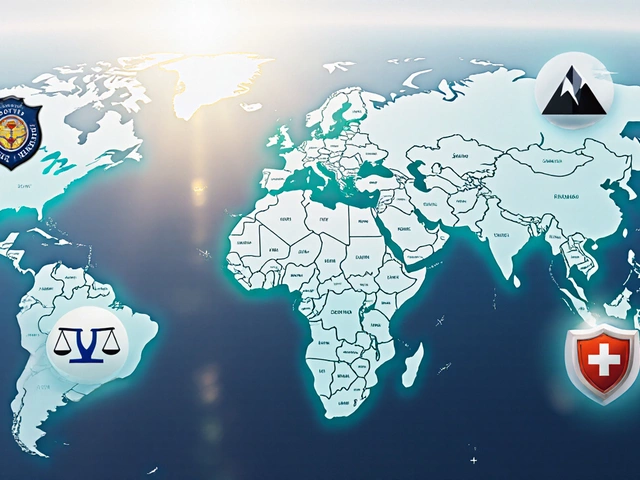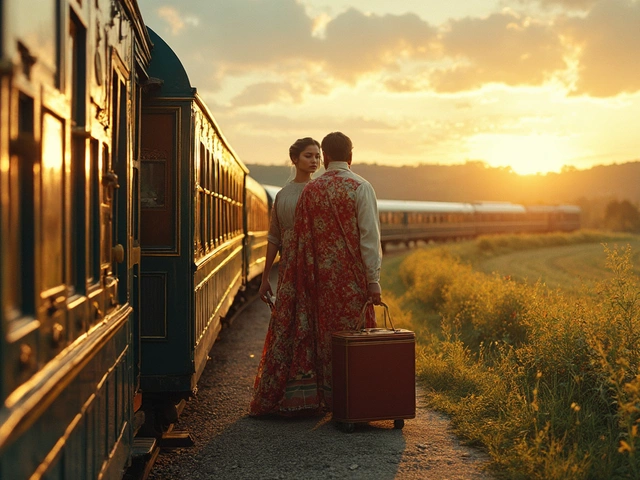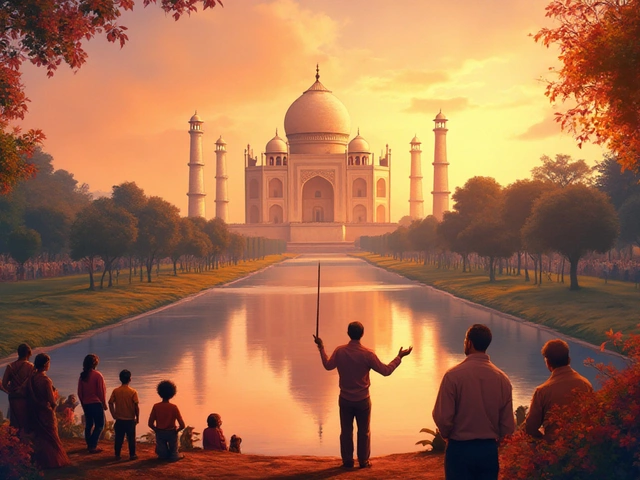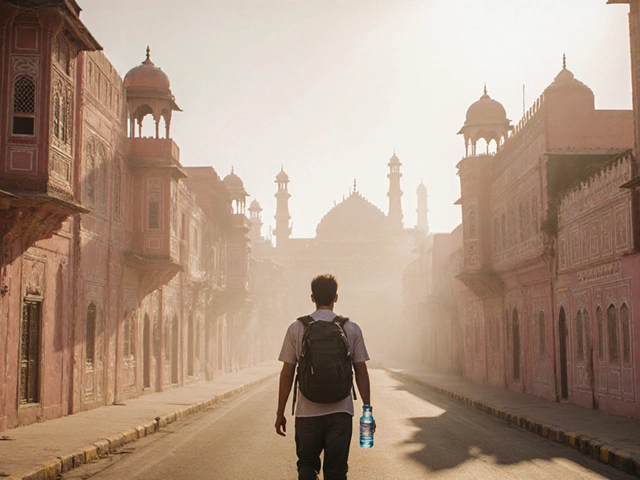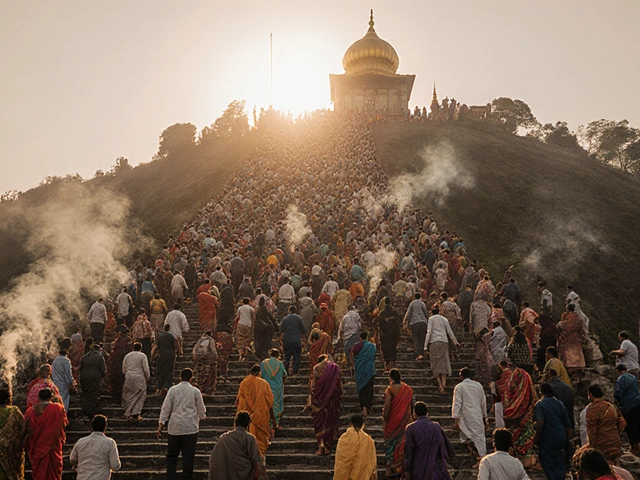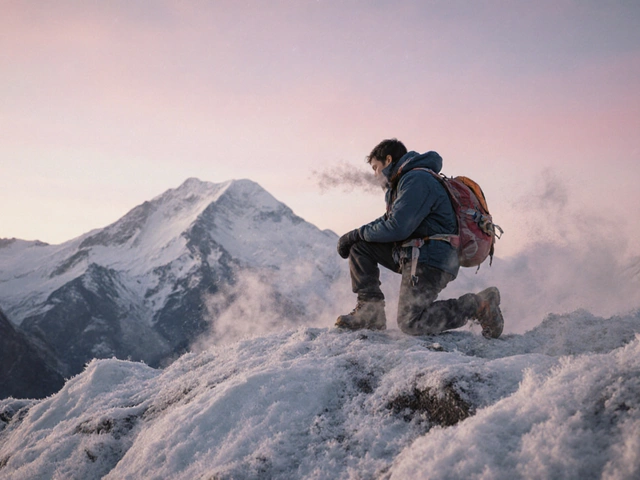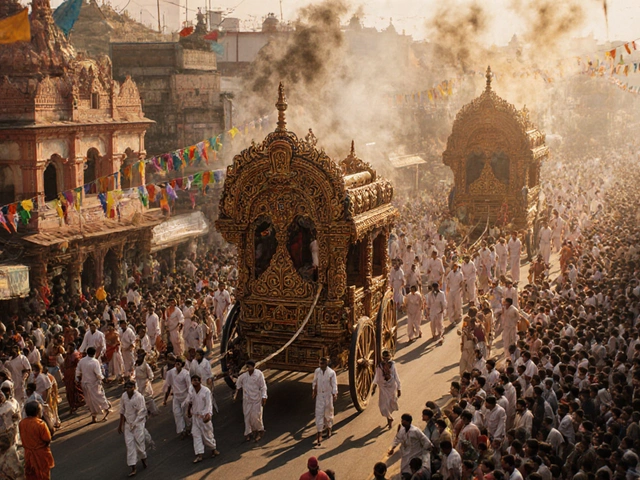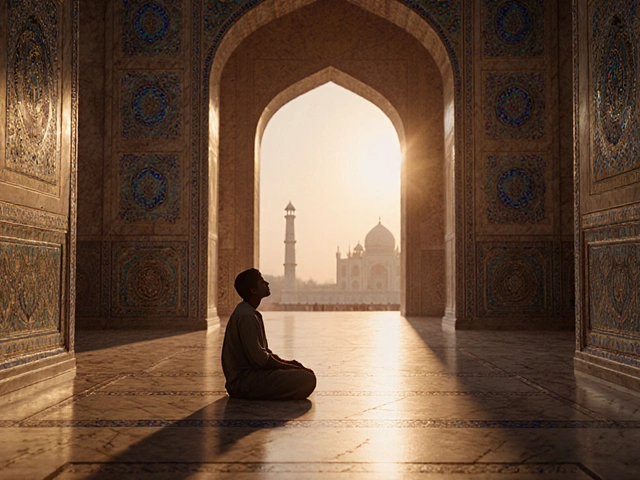India Travel Safety Checker
How safe is your trip?
Find out which parts of India are safe for your travel style, time of year, and interests.
Enter your preferences and click "Check Safety" to see recommended destinations.
If you're planning a trip to India, the biggest question isn't where to go-it's where it's safe to go. With so many headlines about crime, political unrest, or cultural clashes, it's easy to feel overwhelmed. But the truth? Most of India is perfectly safe for travelers, especially if you know where to look and how to prepare. This isn't about avoiding danger-it's about knowing which places let you experience India’s magic without the stress.
North India: The Heart of Safe Tourism
North India isn’t just famous for the Taj Mahal-it’s the most developed and traveler-friendly region in the country. Cities like Delhi, Agra, Jaipur, and Rishikesh see over 10 million foreign visitors every year, and the infrastructure is built for them. Police stations near tourist spots have dedicated help desks. Hotels offer airport pickups. Tour guides speak fluent English. The government even runs a 24/7 tourist helpline you can call from any phone.
Delhi’s Old City might feel chaotic at first, but the main tourist zones-Connaught Place, Humayun’s Tomb, and the Red Fort-are heavily patrolled. Pickpocketing is rare in these areas, and scams are usually obvious if you’ve done a little homework. Don’t follow strangers offering “free” temple tours or “discounted” silk scarves. That’s the only rule you need.
Agra: Where History Feels Secure
Agra is one of the safest places in India for solo travelers and families. The Taj Mahal opens at sunrise, and by 7 a.m., you’ll see hundreds of tourists-locals and foreigners alike-walking the same paths, taking photos, and sipping chai from the same stalls. The ticket booths are government-run. There are no hidden fees. The pathways are paved and well-lit, even after dark for night viewing events.
Local women run small cafés near the Taj with clean restrooms and bottled water. You’ll see families eating together, kids taking selfies, and elderly couples resting on benches. No one bothers you. No one follows you. The only thing you’ll be asked is if you want a photo taken with a camel. And even that’s polite.
Jaipur: A City Built for Visitors
Jaipur, the Pink City, is like a theme park for culture-with real history and zero gimmicks. The Amber Fort, City Palace, and Jantar Mantar are all within walking distance of each other. The city has a tourist police unit with uniforms, badges, and even English-speaking officers. You can find them near major gates or ask your hotel to call one.
Street vendors here know tourists aren’t here to be scammed-they’re here to buy real handicrafts. If you want a hand-painted miniature or a block-printed scarf, go to the government-run emporiums like Rajasthali or CAMP. Prices are fixed. No haggling. No pressure. And if you do want to bargain at a local market, just smile and say “no thank you.” Most vendors will nod and walk away.
Rishikesh and Haridwar: Peaceful, Predictable, and Safe
If you’re looking for yoga, meditation, or a quiet river walk, Rishikesh is your spot. The Ganges flows gently here, and the town has a spiritual calm that feels different from any other city in India. Foreigners come here for weeks at a time-some even move here. Why? Because it’s safe, quiet, and clean.
There are no street fights. No aggressive touts. Even the temple priests won’t push donations. You can walk alone at night along the riverbank, and you’ll see others doing the same-foreigners, locals, monks, and families. The only thing you’ll hear is chanting and the sound of water.
Haridwar, just 20 minutes away, is similar. The evening Ganga Aarti at Har Ki Pauri draws 5,000 people every night. It’s organized, lit up, and policed. You can stand in the crowd, take photos, and leave without being touched or pressured.
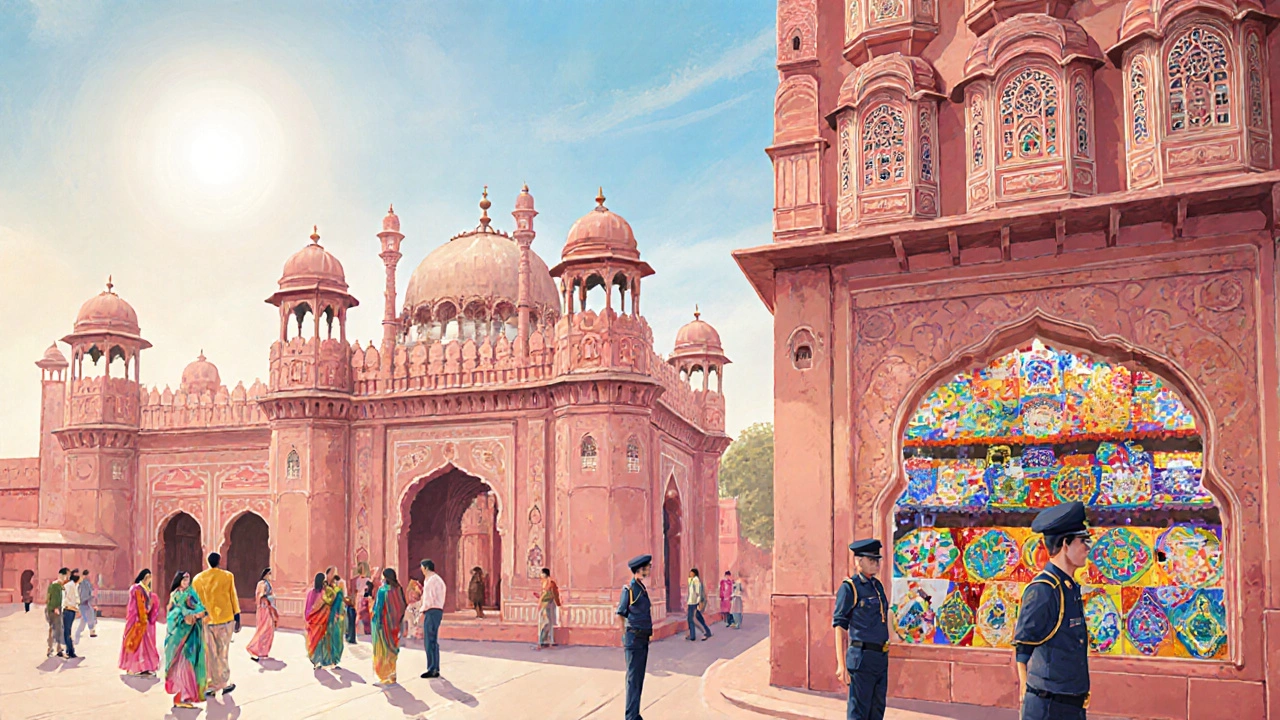
What About the Rest of North India?
Uttarakhand’s hill stations-Mussoorie, Nainital, and Dehradun-are also safe. The roads are good, the hotels are reliable, and the locals are used to tourists. You can rent a car, hire a driver, or even take a train. The state government runs a free tourist shuttle between major spots.
Kashmir is different. The Valley is open to tourists again, but only through registered tour operators. You can’t just show up and wander. The government requires you to register your ID at checkpoints. But if you go with a licensed guide, you’ll see snow-capped mountains, houseboats on Dal Lake, and markets full of saffron and walnut wood carvings. It’s breathtaking-and safe, if you follow the rules.
Don’t go to border areas like Ladakh’s Line of Control or remote parts of Punjab near Pakistan without official permission. Stick to Leh, Manali, and the main highways. These places are packed with tourists and have strong security.
What Makes These Places Safe?
It’s not magic. It’s infrastructure. Safe places in India have:
- Government-backed tourist police
- Well-lit, paved walkways
- Fixed-price emporiums and official ticket counters
- Hotels with 24/7 front desks and secure storage
- Clear signage in English
- Public transport that runs on schedule
These aren’t luxury perks-they’re basic standards. And in North India, they’re standard.
What to Avoid
Don’t assume all of India is like Jaipur. In smaller towns or rural areas, especially in Uttar Pradesh, Bihar, or Madhya Pradesh, services are sparser. You might not find English speakers. ATMs might be out of cash. Roads might be rough.
Don’t travel alone at night in crowded train stations unless you’re in a major city. Don’t accept drinks from strangers. Don’t wear expensive jewelry. Don’t carry large amounts of cash. These aren’t rules for India-they’re rules for anywhere in the world.
And don’t listen to fear stories online. A viral video of a tourist being harassed in Mumbai doesn’t mean you can’t go to Agra. One bad experience doesn’t define a region. Check official travel advisories from Australia’s SmartTraveller or the U.S. State Department. They’re updated monthly. They’ll tell you what’s real.

Real Traveler Stories
A 68-year-old woman from Canada traveled solo from Delhi to Rishikesh last year. She took a train, stayed in guesthouses, and walked everywhere. She said: “I felt safer here than I did in Paris.”
A group of four college students from the UK spent two weeks in Jaipur and Agra. They rented scooters, ate street food, and took selfies with monkeys at the Amber Fort. They didn’t get robbed. Didn’t get lost. Didn’t get sick. “We were just tourists,” they said. “And India treated us like guests.”
Final Tips for Safe Travel
- Use Google Maps offline-it works even without data.
- Keep your passport in the hotel safe. Carry a photocopy.
- Download the Indian government’s “Tourist Helpline” app. It’s free and works in 12 languages.
- Carry a small bottle of hand sanitizer. Clean your hands before eating.
- Buy bottled water. Don’t drink from taps.
- Learn two phrases: “No, thank you” and “Where is the police?”
India isn’t dangerous. It’s just different. And once you know where to go, how to move, and what to expect, it becomes one of the most welcoming places on earth.
Is North India safe for solo female travelers?
Yes, many solo female travelers visit North India safely every year. Cities like Jaipur, Agra, Rishikesh, and Delhi’s tourist zones are well-lit, patrolled, and used to foreign visitors. Dress modestly, avoid walking alone late at night in unfamiliar areas, and stay in reputable guesthouses. Most locals are respectful and helpful. Female-only dorms and homestays are common in Rishikesh and Dharamshala.
Are there any areas in North India I should avoid completely?
Avoid border regions near Pakistan-especially in Punjab and Jammu & Kashmir’s remote zones-unless you’re on an official tour. Also, steer clear of large, unregulated religious festivals in rural areas where crowds are dense and security is thin. Stick to major tourist circuits: Delhi-Agra-Jaipur, Rishikesh-Haridwar, and Leh-Manali. These are all well-monitored and designed for travelers.
Can I use ATMs in North India?
Yes, but not everywhere. Major cities and towns have plenty of ATMs, especially near hotels and malls. In smaller towns, ATMs can run out of cash. Always carry some cash-₹2,000 to ₹5,000 (AUD 40-100)-for emergencies. Use bank-branded ATMs (like SBI or HDFC), not random machines on the street. Check your bank’s international withdrawal fees before you leave.
Is it safe to eat street food in North India?
Absolutely-if you pick wisely. Look for stalls with a long line of locals. That’s the best sign the food is fresh and safe. Avoid anything sitting out in the open heat for hours. Stick to hot, freshly cooked items like samosas, chole bhature, or parathas. Drink bottled water. Wash your hands before eating. Most travelers eat street food without issues-it’s often the best meal they have.
Do I need a visa to visit North India?
Yes, all foreign visitors need an Indian visa. Most travelers apply for an e-Tourist Visa online through the official Indian government portal. It takes 3-5 days to process and is valid for 60 days with double entry. You must enter through designated airports or seaports. Don’t try to get a visa on arrival-it’s not available for most nationalities anymore. Always check your country’s embassy website for the latest rules.
Next Steps: Planning Your Trip
Start by picking one route: Delhi-Agra-Jaipur is the classic 5-day loop. Add Rishikesh if you want peace. Extend to Dehradun or Mussoorie if you love mountains. Book your flights into Delhi or Jaipur. Reserve your first hotel in advance. Use trusted platforms like Booking.com or Airbnb-filter for “24/7 front desk” and “free cancellation.”
Download the “India Tourist Helpline” app. Save the number +91-136-2232345 in your phone. That’s the government’s tourist help line. It works in English, Hindi, French, German, and Japanese.
Leave your fear behind. India doesn’t want to scare you. It wants you to see its temples, taste its food, and feel its rhythm. The safest thing you can do is show up with an open mind-and a bottle of water.

